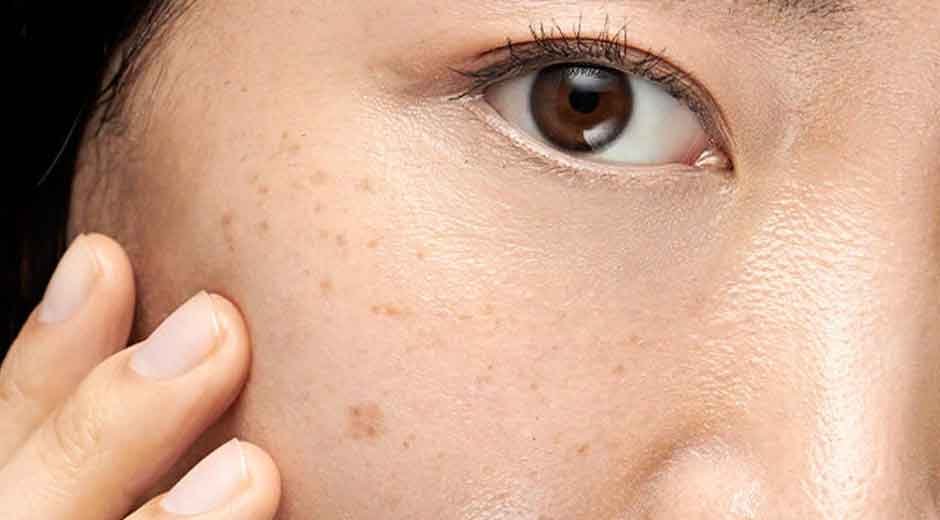Many who experience hyperpigmentation get frustrated by the fact that some marks fade away after a few weeks while some feel as though they’ve taken up permanent residence on the skin. They all don’t respond randomly, however. Those that respond to fading and those that seem impossible to treat have scientifically explainable reasons to correlate these outcomes based upon what’s actually going on under the skin.
Types of Dark Spots
Not all hyperpigmentation forms the same, which is why results are so vastly different. Post-inflammatory hyperpigmentation (PIH) occurs subsequent to any acne, cuts, and injuries. They typically sit in the upper levels of the skin and respond great to treatment since they did not have time (or improper treatment) to go deeper into the dermis. They’re the annoying spots but at least they’re in the epidermis where they’re more manageable.
Melasma is an entirely different type of beast. Melasma occurs due to hormones or sun exposure (or both). The patches formed exist in the dermis and epidermis, from a few layers deeper, making pigmentation attempts at a cellular level more difficult to intervene. Additionally, since they are driven by hormones (along with UV and even heat), this makes melasma even harder to treat as they trigger the reaction that creates these new dark spots in the first place. This is why melasma is often a lifelong diagnosis, returning even after treatment.
And then there are sun spots, solar lentigines. These exist due to years upon years of sun exposure and while they’re stubborn, they at least respond to consistency more than melasma does. But in any case, time is of the essence. It’s unreasonable to expect treatment results after months on damage that took decades to form.
Why Does Depth Make Such a Difference?
Pigment that exists in the epidermis (the top layer) responds well to treatment and exfoliation as skin naturally turns over every 30 days or so allowing for cells to be shed if the proper ingredients are applied quickly enough. The best dark spot treatment recognizes this issue and the one that creates additional marks.
Pigment that sits in the dermis, the second layer, where products simply cannot penetrate is not something that can be helped unless treated professionally. This issue occurs for older spots, improperly treated inflammation or conditions whereby skin barriers existed during the creation of pigmentation. Deep pigmentation, then, is something that needs a separate intervention where melanin clumps now exist in areas where products cannot reach.
And then the stubborn cases happen when pigmented skin exists at both levels. Treatment can make them look great and then subsequent skin turnover results in denser pigmentation becoming more visible due to the natural shedding cycle. People think their products stop working when in reality, they’re just seeing the next layer of pigment they’ve created.
What Activators Keep Dark Spots Going
Even with treatment, certain activators keep dark spots looking new. Sun exposure is the most likely culprit that keeps melanocytes (the cells that produce pigment) producing more pigment when it senses UV damage. This is why sunscreen is a must because all of the work you’ve done can easily be reverted if you forget your SPF, even for incidental exposure from driving or sitting in front of a window.
Heat activates melanocytes, too, and melasma can get worse during summertime or for those who regularly work in heated environments. That cup of coffee you keep resting on your cheek, hot yoga classes, standing over a stove, they can all contribute toward unwanted discoloration as well. Not until people connect their discoloration to their variables do they realize it’s a factor.
Inflammation anywhere on the skin activates melanocytes, and that means ongoing acne or excessive exfoliation can worsen existing dark spots while creating new ones. The skin interprets irritation as injury and therefore compensates with protective pigment, which is what you’re trying to prevent.
The Skin Cycle
In your twenties, skin turns over every 28 days. By your forties, that number creeps up closer to 40-50. The slower cell turnover occurs, the longer pigmented cells remain on surface visibility for longer and contribute toward stubborn spots either increased pigmentation at first glance, or at subsequent peeks.
It also means treatment takes longer since you’re waiting for those pigmented cells to separate naturally via shedding cycle from newly formed cells being developed.
This is where people fail – because they give up too early. A product works for three weeks and when there’s no substantial change, they switch products. But if you have 45-day turnover, you’ve not even gotten through one complete cycle yet. You still have pigmented cells making their way to the surface so they can be ejected but gradual change doesn’t happen overnight.
Exfoliation helps speed things up – but too much means inflammation which leads to more production of pigment. Not enough means pigmented cells linger longer than they need to be. Chemical exfoliants (AHAs and BHAs) tend to be better than physical scrubs because they don’t produce micro trauma with redness and potentially create further discoloration.
Why Certain Products Work Better on Certain Spots
Vitamin C is best for new dark spots because it interferes with the pathway that creates melanin in the first place and if applied within the first few days/weeks of development, deep formation can be avoided altogether. But established dark spots need more help than vitamin C’s anti-inflammatory properties, which aren’t powerful enough to make substantial changes.
Hydroquinone is considered gold standard for stubborn hyperpigmentation because it decreases melanin production by decreasing melanocytes in regulated areas. It’s controversial, some derms love it while others won’t prescribe it since adverse side effects exist if used long-term (which it should not be used). Either way, it’s not permanent since eventually, melanocytes return.
Retinoids help with increased cell turnover which means fewer new pigments; they prevent pigment creation and can help fade existing ones, albeit gradual. They take months and irritate at first use, and people tend to quit because it’s initially more painful than helpful.
Newer trends like tranexamic acid and azelaic acid are being recognized more favorably as they don’t have harsh side effects associated with them. Azelaic acid helps active acne while preventing PIH which is efficient but ideally should only be used by those who’ve not tried previously since it potentially interferes with other treatments.
The Prevention vs Treatment Conversation
If you’re only focusing on treating pre-existing marks but at the same time continuing your habits that create new marks down the road, it’s like bailing out a sinking boat without plugging up the hole that’s making it sink in the first place. Prevention must go hand-in-hand which means daily SPF (even inside), avoidance of heated exposure when possible, close monitoring of all inflammation so it doesn’t go far enough to become PIH marks.
Most dermatologists generally recommend morning protection and evening treatment strategies; antioxidants, together with SPF combat against further damage while active ingredients work on existing imperfections while you sleep as skin heals itself overnight. It makes sense since many treatment strategies break down in sunlight anyway.
Three-to-six-month timelines exist for improvement, with invisible spots likely only treated on surface level without prevention efforts showing improvement first. It’s only subsequent once-the-surface-layer-is-shed improvements that reveal themselves over time, which is why it’s important to keep up with habits regardless of getting impatient looking for “the perfect product.”
The answer to why some spots fade while others remain has little to do with pure speed of success or failure; instead it’s a matter of superficial versus stubborn; superficial marks probably never had a chance to go deeper while stubborn ones require extended vigilance with the right response efforts combined with prevention to prevent new signs from emerging creating a cascading effect later down the line.










